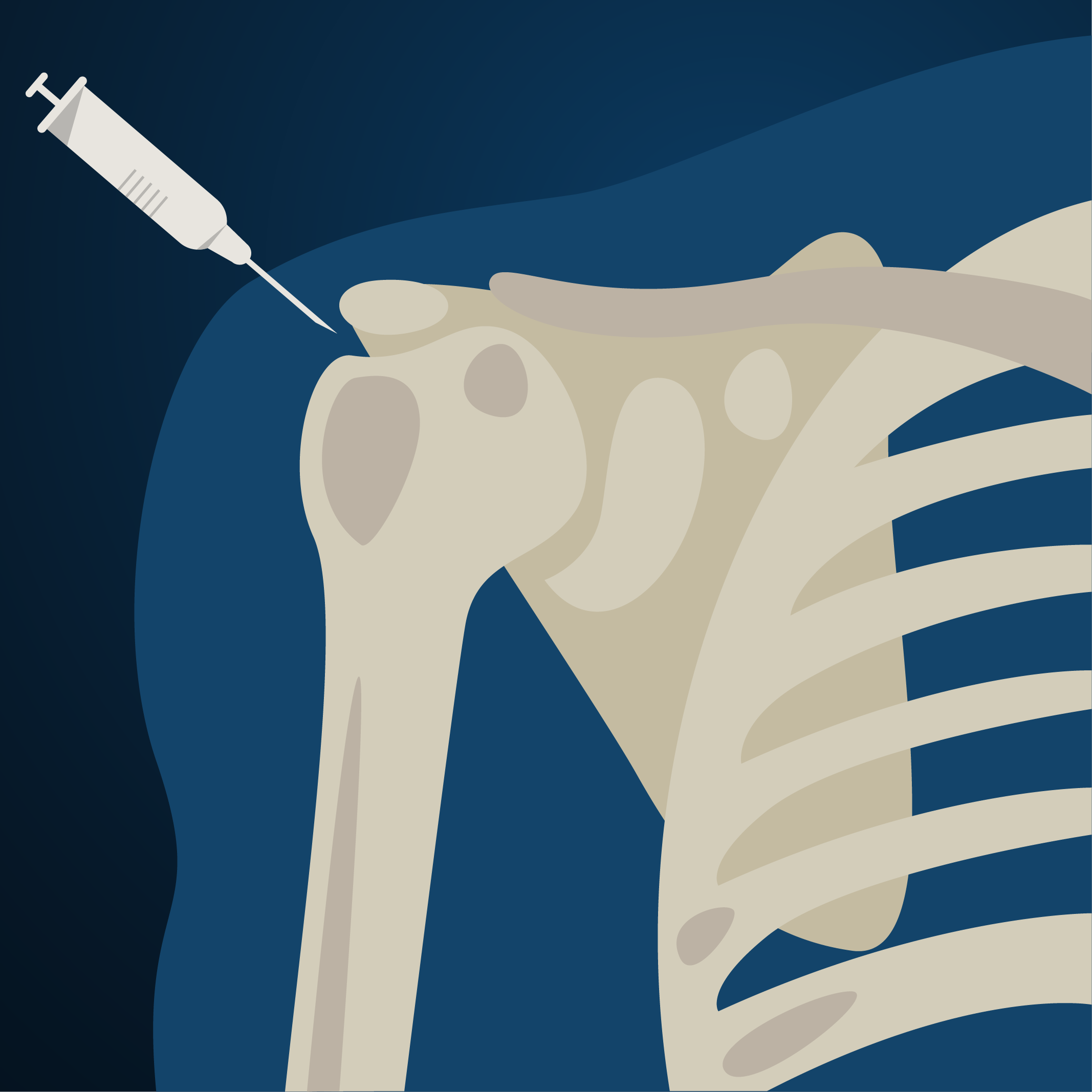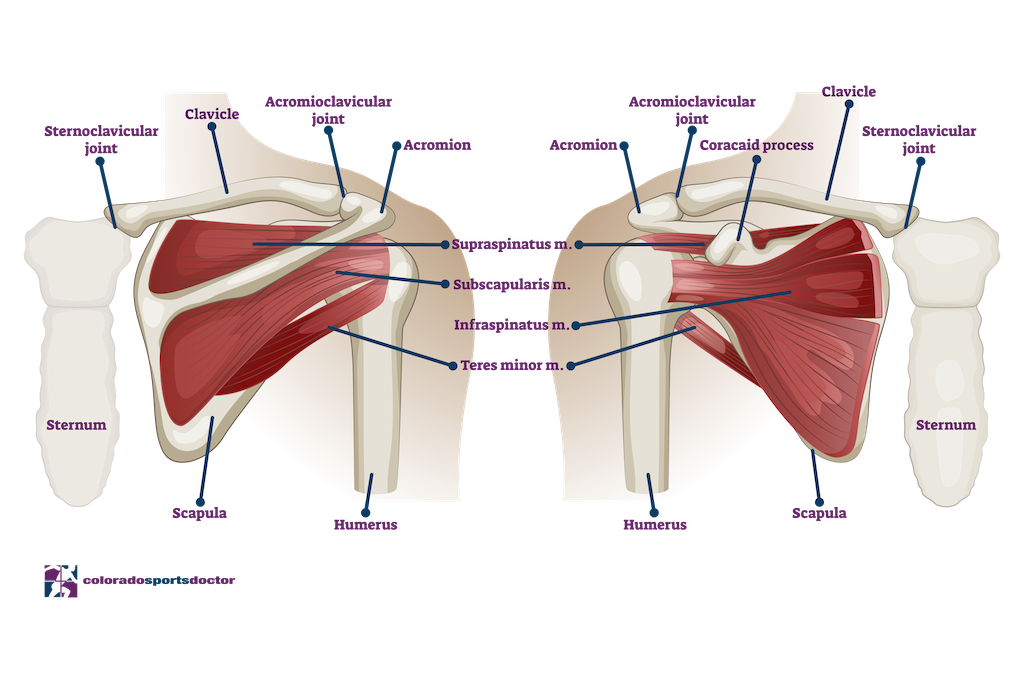
PRP Shoulder Treatment
Biologic treatments such as Platelet Rich Plasma (PRP) offer patients a chance to improve symptoms and potentially enhance their healing potential for various orthopedic problems.
Shoulder Anatomy
The shoulder joint, known as the glenohumeral joint, is a ball-and-socket joint that allows for a wide range of motion. The ball is the head of the humerus (upper arm bone), and the socket is the glenoid cavity of the scapula (shoulder blade). Surrounding the joint is the rotator cuff, a group of four muscles and their associated tendons that provide stability and facilitate shoulder movements such as lifting and rotating the arm.
Cartilage and synovial fluid also support the glenohumeral joint. The articular cartilage covers the ends of the bones, providing a smooth surface for movement, while the synovial fluid lubricates the joint. The labrum, a ring of cartilage around the glenoid cavity, enhances stability by deepening the socket. Ligaments and other connective tissues further contribute to the joint’s integrity.
Platelets, components of the blood, play a crucial role in the shoulder’s healing processes. They contain growth factors and proteins essential for tissue repair and regeneration. Platelet-rich plasma (PRP) therapy utilizes these components to treat various shoulder conditions by enhancing the body’s natural healing capabilities, reducing inflammation, and promoting tissue repair.

Injuries
PRP therapy treats various shoulder injuries and conditions, mainly cartilage and soft tissue damage. Common conditions treated with PRP include:
Partial Rotator Cuff Tears – PRP can benefit partial tears by promoting tissue healing and reducing pain and inflammation. However, it is not practical for complete rotator cuff tears.
Shoulder Arthritis – PRP may help manage pain, inflammation, and swelling associated with shoulder arthritis, potentially slowing the progression of the disease by protecting the remaining cartilage.
Frozen Shoulder (Adhesive Capsulitis) – Emerging studies suggest PRP may help alleviate the stiffness and pain of frozen shoulder. However, more research is needed to establish its efficacy as a primary treatment.
These conditions often lead to significant pain, restricted movement, and decreased quality of life. For the right patients, PRP therapy may offer a non-surgical option to enhance healing and restore function, particularly for those unresponsive to conventional treatments.
PRP for the Shoulder
Platelet-Rich Plasma (PRP) therapy for the shoulder involves collecting a small sample of the patient’s blood, which is then processed in a centrifuge to separate the plasma and platelets from other blood components. The resulting PRP, rich in growth factors, is injected into the affected shoulder area. These growth factors may help reduce inflammation, stimulate tissue repair, and alleviate symptoms of conditions like arthritis and partial rotator cuff tears.
PRP therapy is particularly effective for patients with mild to moderate arthritis and partial rotator cuff tears. For shoulder arthritis, a series of three injections, spaced about a week apart, is typically recommended. For rotator cuff and other soft tissue injuries, two injections spaced about a month apart are often advised to allow adequate tissue repair time and minimize discomfort.
The benefits of PRP therapy can include reduced pain, decreased inflammation, and improved joint function. While it may not eliminate symptoms, it has the potential to significantly enhance the quality of life for many patients, allowing them to engage in activities that were previously too painful.
As the cartilage continues to deteriorate the joint will become increasingly stiff, inflamed, and painful. If conservative measures such as physical therapy, anti-inflammatory medication, and activity modifications fail to provide enough relief, total shoulder replacement is the procedure of choice. One prominent symptom that drives patients to act is night pain that interferes with sleep. Night pain is incredibly common for shoulder arthritis.
Recovery
Recovery from PRP therapy for the shoulder is generally straightforward. Patients can typically resume normal daily activities shortly after the injections, avoiding impact and strenuous activities. Light exercises such as cycling, using an elliptical machine, and walking are encouraged to maintain mobility without over-stressing the joint.
Patients are advised to avoid anti-inflammatory medications for a week before and a couple of weeks after the PRP injections, as these can interfere with the healing process. Physical therapy may also be recommended to improve shoulder strength and flexibility, further enhancing the benefits of PRP therapy.
Long-term outcomes of PRP therapy are promising, with many patients experiencing sustained relief from shoulder pain and improved joint function for several years. As with any medical treatment, individual results may vary, and ongoing research continues to refine these biologic therapies, making them an increasingly viable alternative to surgery for shoulder conditions.
Join Dr. Jones as he walks you through the steps of a PRP Shoulder Treatment:
